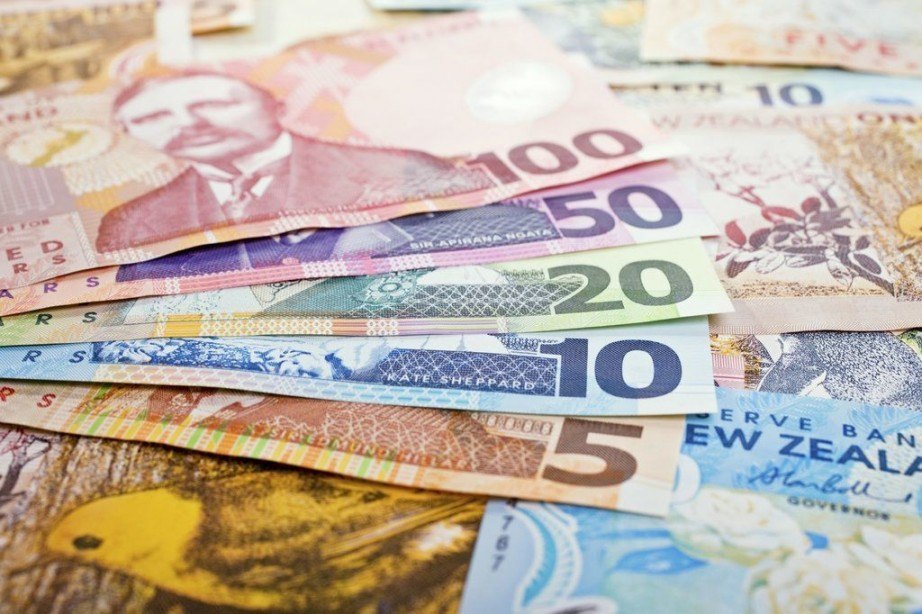
Possibly. The top banks in Australia and New Zealand have a pessimistic outlook for both the Aussie (AUD) and the Kiwi (NZD) near-term. With both currencies falling further and faster than expectations, top banks have lowered their AUDUSD outlook and NZD forecast. The question is, which currency will be weaker relative to the other?
Recently, the AUDNZD bounced, which suggests the Aussie currency is performing slightly better than its Kiwi counterpart. The top banks expect the AUD to NZD exchange rate to rise, because the New Zealand dollar will remain weak compared to the Australian dollar.
Check today's AUDNZD Forex Rate: Currency Converter and Graph
Bank AUDNZD Exchange Rate Forecasts
- NAB - AUDNZD forecast shows the exchange rate to be 1.07 at the end of the year
- Westpac - predict the AUDNZD rate to be 1.04 by December
Is the AUDNZD rising?
Not exactly. The Aussie dollar is relatively less weak than the Kiwi, which makes the rate slightly higher, but both currencies are falling. There are many factors that influence this relationship, but here are some of main ones:
- Australian dollar currency (USD): When the AUD rises, the NZD falls. This is because the AUD/NZD is a currency pair. The Australian dollar has been falling relatively less than the New Zealand dollar since the beginning of the year.
- Weak New Zealand economy: The Reserve Bank of New Zealand (RBNZ) surprisingly cut interest rates earlier this year. The cash rate is at 1.0% but most investors predict the RBNZ will cut rates by the end of the year. When interest rates are cut, the value of the NZD falls.
- Weak Chinese economy: Around 50% of New Zealand's exports go directly to Asia. China accounts for the majority. When China's economy falters, they reduce imports from New Zealand, leading to a lower New Zealand dollar. Unfortunately, China only grew 6.2% in the April-June quarter of 2019, almost a 30-year low.
- Falling commodity prices: New Zealand's biggest exports are dairy, eggs, honey and meat, most of which are exported to China and Australia. When milk and other farming goods prices fall, the NZD also falls.
- US-China trade war: US President Donald Trump is going to increase tariffs on US$250 billion of Chinese imports from 25% to 30% by the beginning of October. This is a key reason why China's growth is slowing and is importing less from New Zealand.
Major Foreign Exchange Rates
The AUD and NZD aren't the only currencies that are falling. Major currencies like the Euro (EUR), Great British Pound Sterling (GBP) and Japanese Yen (JPY) are also being influenced by a rising US dollar and weak local conditions.
For Australian dollar cross rates (AUD/USD, AUD/EUR, AUD/GBP, AUD/JPY) this means it'll be extra difficult for banks to forecast which direction currencies will go in the future.
Here is a summary of what banks are currently forecasting:
AUDUSD - A pessimistic outlook for the Aussie (AUD) short-term
AUDEUR - Has the AUD EUR peaked already in 2019?
AUDGBP - AUD/GBP exchange rate predicted to move higher by the end of the year

FAQs
What is the AUDNZD?
Foreign exchange rates are the relative prices between two currencies and this is why currencies are expressed in currency pairs like AUDNZD. Due to its major commodity exports, New Zealand is one of three primary commodity currencies, along with the Australian Dollar (AUD) and Canadian Dollar (CAD). This means commodity prices have a large influence on the Kiwi, AUD and CAD.
How to make an exchange rate forecast for the AUDNZD?
Investors forecast the movement of the Australian dollar as it relates to the New Zealand dollar, by looking at key influences including:
- Australian dollar, New Zealand dollar and US dollar forecasts
- Central banks - namely the Reserve Bank of New Zealand (RBNZ), Reserve Bank of Australia (RBA), the US Federal Reserve (the Fed), European Central Bank (ECB)
- Interest rates - linked with central banks that control interest rates and monetary policy. Investors predict how central bank announcements - like interest rate cuts or hikes - will affect interest rate spreads and the relative value of currencies
- Local governments - Australian Government and Prime Minister Scott Morrisson, New Zealand Government and Prime Minister Jacinda Ardern, US Government and President Trump, UK's Brexit and Prime Minister Boris Johnson
- New Zealand Economic Data - Economic growth indicators (GDP), Inflation (CPI Core Price Index, PPI Production Price Index), Trade balance (balance between exports and imports of total goods and services)
- Australian Economic Data - GDP, trade balance and inflation
- US Economic Data - GDP, trade balance and inflation
- China (plus Hong Kong, Singapore, and rest of Asia) Economic Data - GDP, trade balance and inflation
- Commodity Price Forecasts - New Zealand's biggest exports are mostly farming products like dairy, eggs, honey, and meat.
Does the AUDNZD exchange rate change a lot?
Currency crosses like the AUDNZD can be volatile. AUDNZD forecasts can also change quickly. That’s why it’s popular with traders and why it’s important to consider hedging if you're transferring money overseas. Many companies offer rate alerts online to help you get the best AUDNZD exchange rate.
Why should I trust the 'Big 4' bank AUDNZD forecasts?
The Australian and New Zealand dollar exchange rates can change. A lot. This is because multiple factors influence currency movements that are both local and global. Plus, bank forecasts are generated with a combination of computer modelling and human influence. So while banks have experts that spend long hours modelling future currency moves, there may be factors that can't be predicted. We think it's better to look at exchange rate forecasts as a guide. We also recommend you don't make your financial decisions based solely on bank forecasts, but rather, take into account your personal objectives, financial situation and needs.

